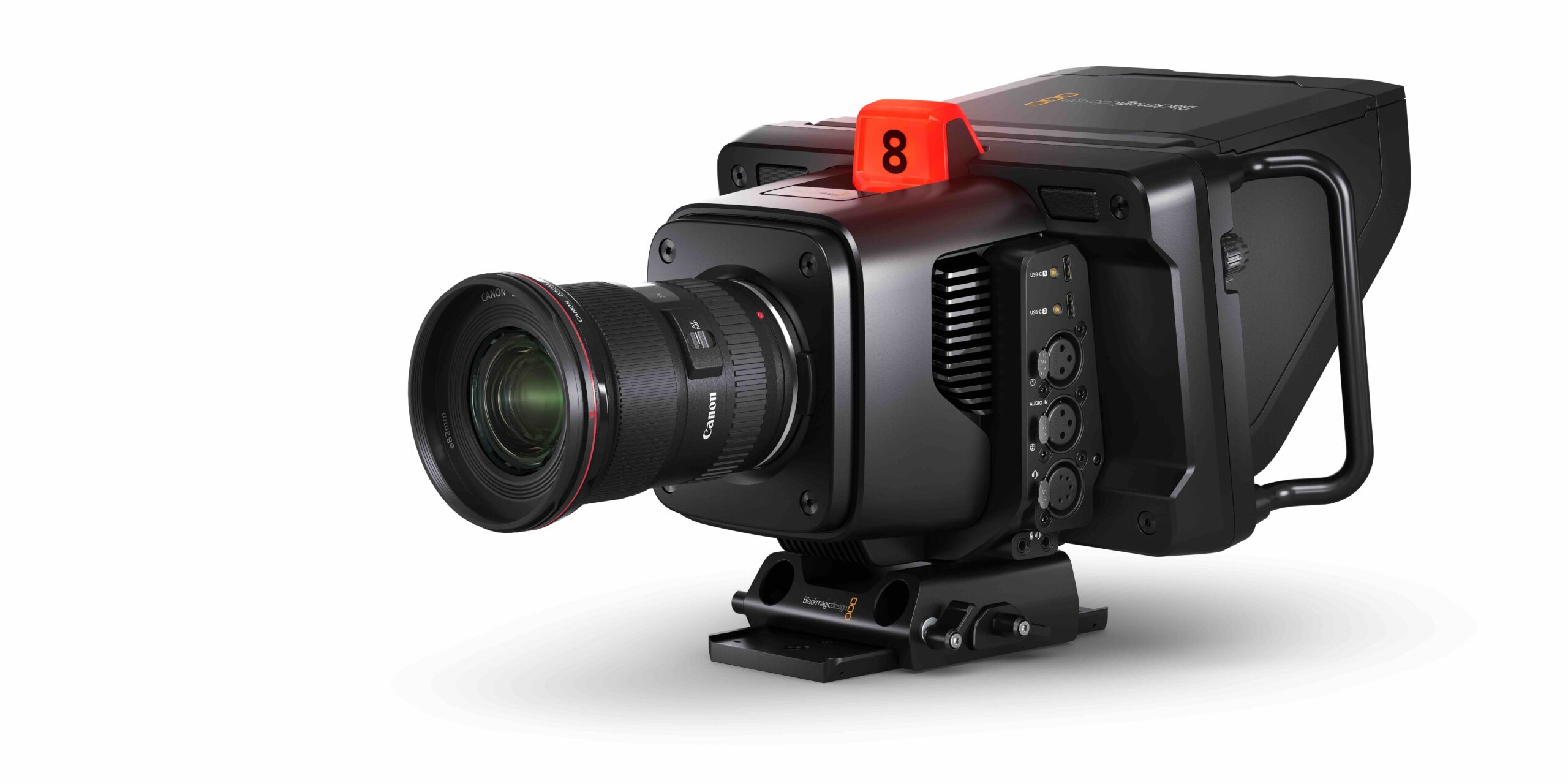White Paper: Embracing Collaborative Technologies and Remote Workflows in Sports Broadcasting
Story Highlights
The demand for content is higher than ever within the sports industry, with content ranging from live action broadcasts to short films to documentaries and long form video to social media snippets and reels and beyond. With today’s fast pace of digital consumption and a more diverse range of content than ever, broadcasters need to invest in flexible tools that support these growing content production needs. These tools include things like collaborative technologies and remote workflows.

Bob Caniglia, Director of Sales Operations for the Americas, Blackmagic Design
Not only do these new technologies increase efficiency and simplify workflows, but they increase productivity because they allow you to create from anywhere while still staying connected to your team, company, or home base, eliminating the traditionally high cost and complexity of collaboration and broadening access to talent around the globe.
Cloud on the Horizon
The pandemic turned the industry on its head, and the ripple effects are becoming clearer over time. During the pandemic, when everyone had to scramble and shift to remote work, the initial video setups may not have been the most ideal, but they got the job done. However, as time went by, the benefits of remote work came to light, with setups being finetuned and an industry shift toward the investment in better tools and technologies to support these workflows. Even as much of the industry is now back physically “in person,” the benefits of remote workflows, such as being able to use talent outside of your physical location, saving money on travel costs, and creating content more efficiently, are so valuable that broadcasters are still capitalizing on remote workflows in order to bring content to a variety of their audiences’ screens faster.
The effects coming out of the pandemic, combined with the new era of YouTube, social media, and the next generation of filmmaking, mean that traditional sports broadcasting has given way to a completely new set of opportunities for sports video content creators. The workflows and tools of the past have yielded to a vastly different landscape of tools and workflows for today’s creatives which supports new ways of visual storytelling, such as sports filmmaking and docu-style content, more stylized social media content with full post production, and more.
One important tool helping to enable these new facets of sports broadcasting is cloud collaboration. Cloud functionality has come a long way in the last few years and has truly transformed the industry. Cloud-based capture and post workflows enable creators to work together more efficiently and help to streamline both broadcast and filmmaking workflows by facilitating remote collaboration, allowing multiple users to instantly shoot and access content, work on the same timeline and share large files between themselves on a global scale. This in turn brings sports news, films, broadcasts, and other content to the airwaves faster.

Blackmagic Studio Camera 6K Pro Lens
The latest cloud technologies offer extreme flexibility, allowing creators to work on projects from anywhere in the world rather than needing to be in the studio or together in a fixed location: capture content and upload to the cloud directly from your phone or camera; house projects and libraries; share files; edit, grade and sound design productions remotely; and collaborate on a global scale all in real time. By removing the limitations of physical location, there is an infinite pool of global talent to tap into. Collaboration with videographers, photographers, cinematographers, editors, colorists, visual effects artists, and sound engineers that you may have never met in person is now possible without sacrificing any quality. And with everyone being able to work together at the same time, without having to import and export files, translate projects, lose work, or conform and manage changes, you can save time and money and maximize efficiency.
While cloud-based tools and workflows are coming into their prime, it’s only a matter of time before these developing tools and processes will become a ubiquitous standard across the industry.
Let the Stream Guide You
While shooting and broadcasting from outside of a studio is not new, its attainability has reached new heights in the post pandemic era and is increasingly becoming the norm thanks to streaming technologies. From some of the major networks in sports broadcasting down to local, small town district sports, many have discovered the advantages of remote workflows and streaming content to both large and small audiences.
There are products on the market today, such as cameras with built-in live streaming and self-contained streaming hardware boxes, with a myriad of streaming functionalities that not only allow you to broadcast from anywhere in the world to a live global audience, but also stream to or receive a stream from other devices, further simplifying and connecting remote workflows.
For example, with the right workflow you can stream from any kind of remote location, from hockey games in Alaska to surfing competitions in Australia to the 2024 Olympics games in Paris, France, generating a simple yet professional live production without worrying about dropped frames or complicated settings. This also means that the talent and crews manning the live streams can be local to the event, freeing up time and budget because costly travel isn’t required to send an entire team, or even one person, on site. Local talent and crews can create and share this content in real time, bringing their unique perspectives and regional expertise, and contributing a diverse range of ideas and content to audiences worldwide.
Even if you aren’t working for a major national broadcaster, streaming is useful for all sports applications down to local youth sports, which may operate on a smaller scale but can still be equally important to their audience and produce professional content. For example, local high schools can stream games so that friends and family who don’t live nearby or alumni who have moved away can still watch their home team, or you can stream away games back home to those who weren’t able to travel with the team.
Live streamed sports content can be distributed via numerous platforms like YouTube, Facebook, Twitch, and more without a delay so viewers can watch it in real time and not miss a thing. The live stream can also be sent over the internet back to your studio, where it can be received and converted back to video for connection to a switcher for mixing with other assets or as part of a larger program, and then incorporated into the live broadcast from there.
Collaborative technologies and remote workflow solutions are more accessible than ever before and are only getting better. Now is the time to learn how to take advantage of what these new advancements can offer and ultimately bring your high-quality sports video content to viewers faster and more efficiently.
